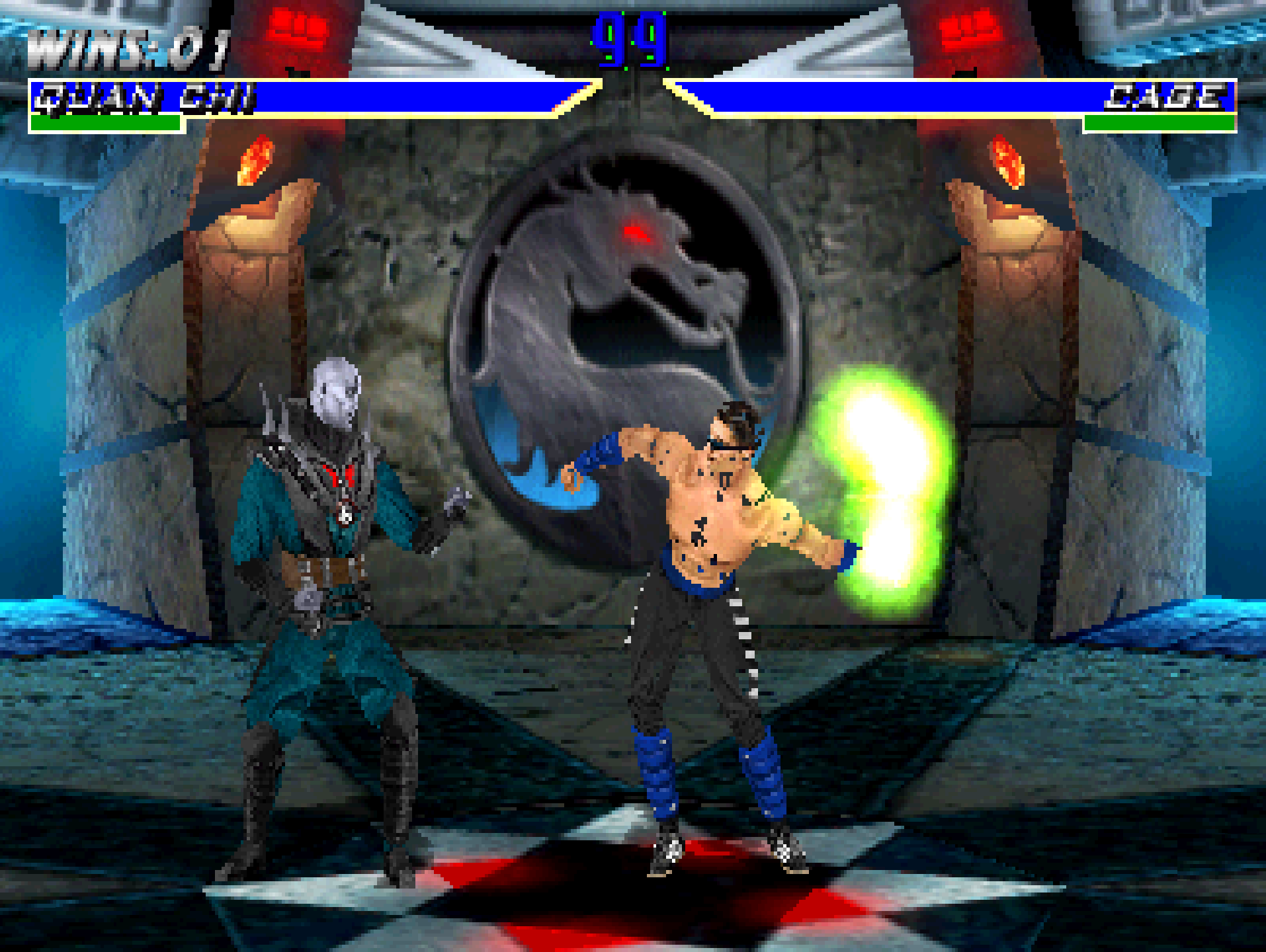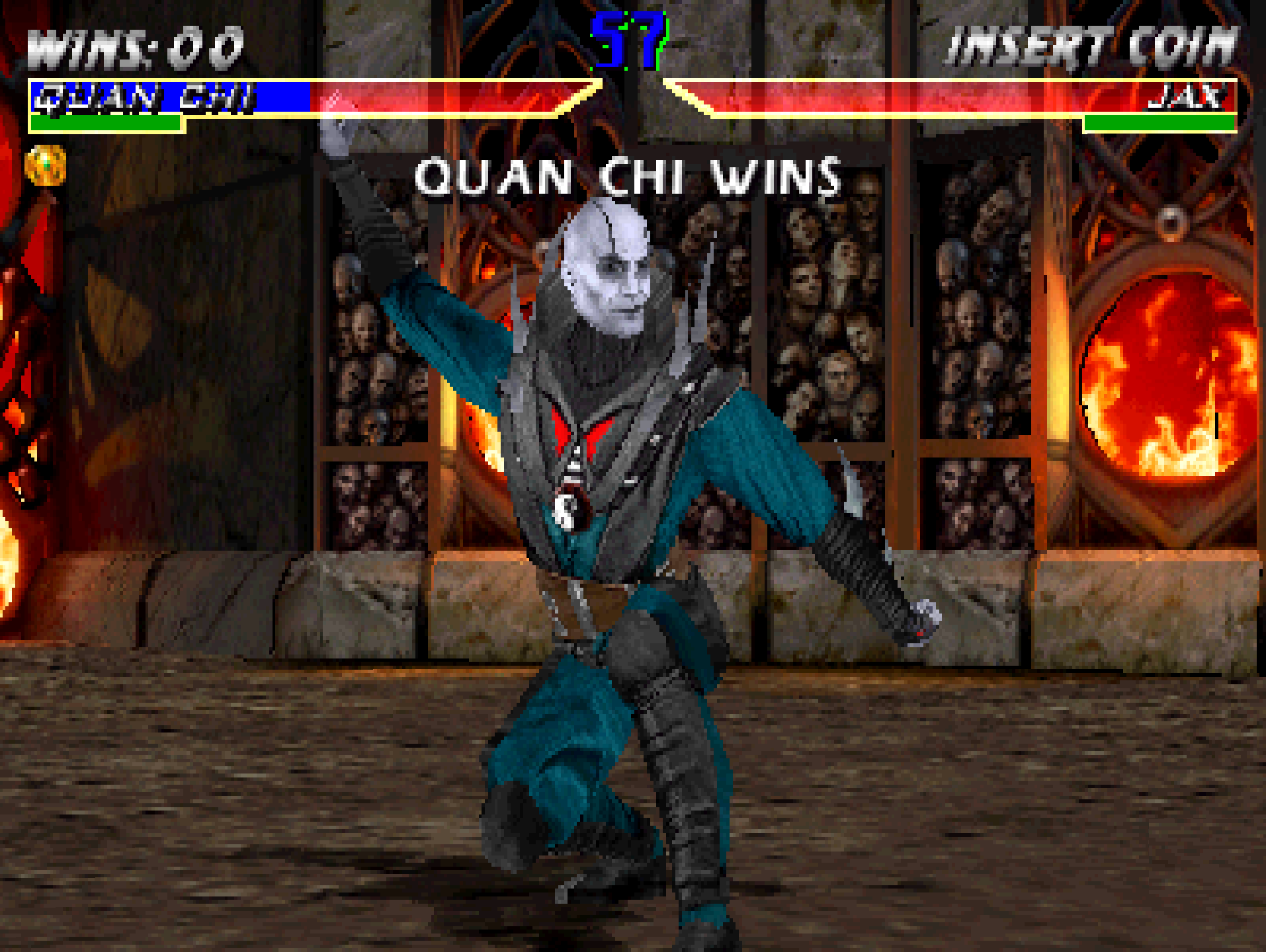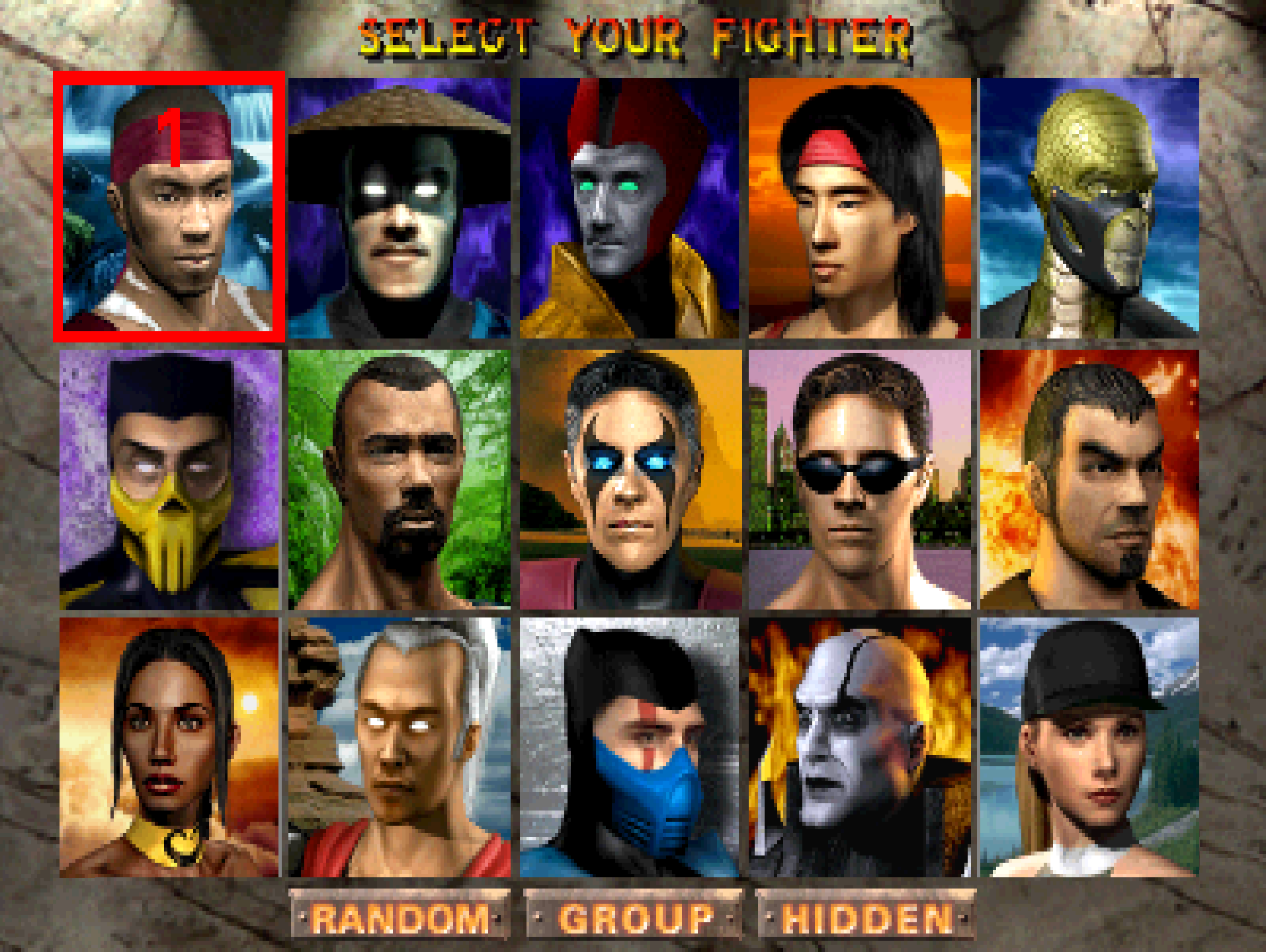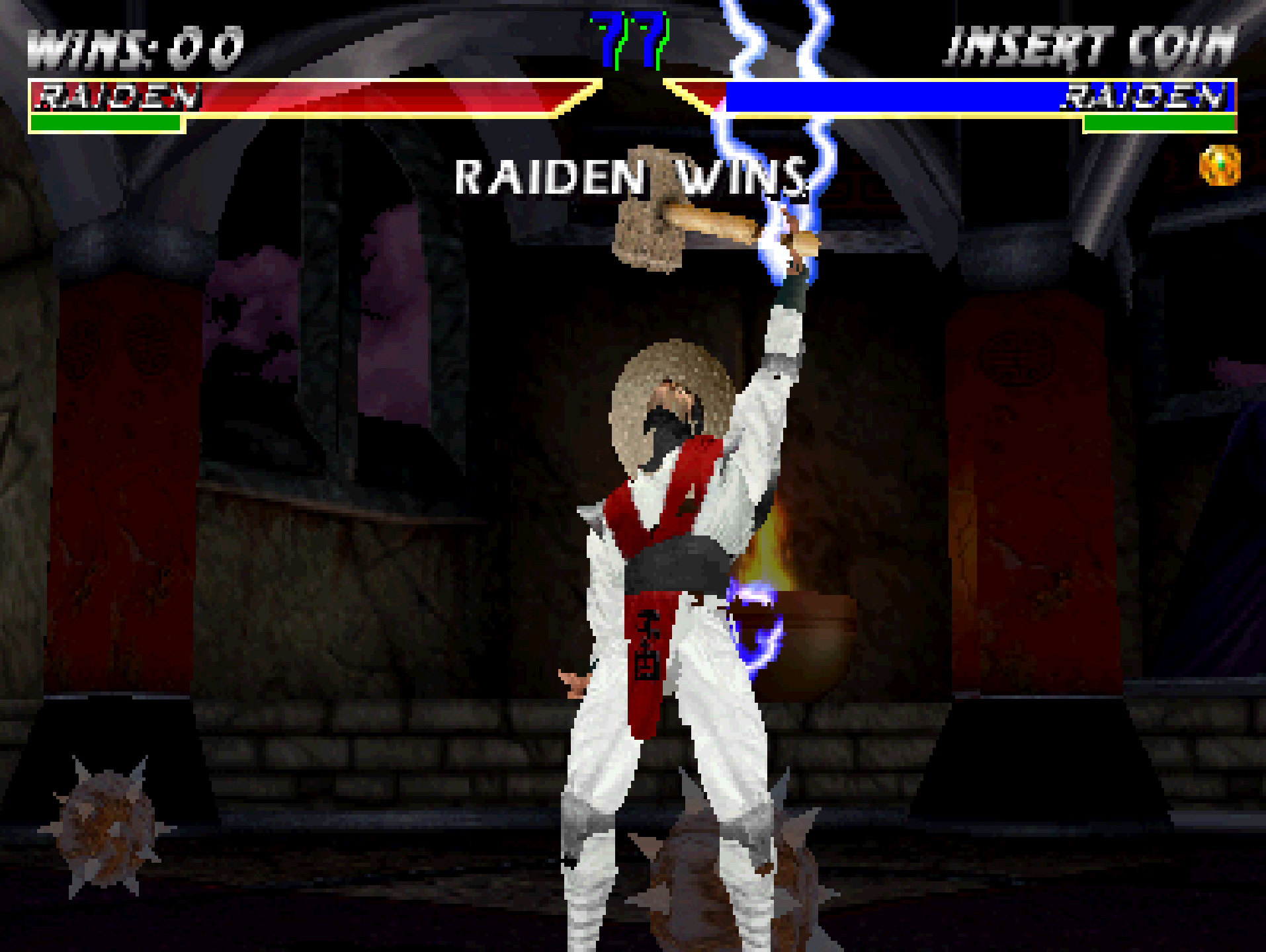Introduction
Released in 1997, Mortal Kombat 4 marked the franchise’s transition from 2D digitized sprites to 3D polygonal graphics. Developed by Midway, it was the first game in the series to use a fully 3D engine while retaining the series’ core gameplay elements—brutal fatalities, fast-paced fighting, and dark mythological lore. Though it divided longtime fans, MK4 remains a key evolutionary step for the franchise.

Development and History
- Developer: Midway Games
- Publisher: Midway Games
- Release Date: September 1997
Built on the Zeus arcade hardware, MK4 was Midway’s attempt to modernize its flagship fighter in the face of rising competition from 3D games like Tekken and Virtua Fighter. While characters and arenas were rendered in 3D, gameplay stayed on a 2D plane for most of the combat. The result was a hybrid experience that aimed to keep the Mortal Kombat identity intact while pushing technical boundaries.

Gameplay Video
Gameplay and Mechanics
Core Gameplay
- 3D Models on 2D Plane: Characters are polygonal but move primarily in 2D with limited sidestepping.
- Weapon System: Each character has a unique weapon that can be drawn, dropped, and picked up during fights.
- Simplified Combos: Compared to MK3/UMK3, MK4 reduced the complexity of dial-a-combos.
- Fatalities: Fully 3D fatalities featuring dynamic camera angles.
- Throw and Break System: Adds defensive options and mix-ups.
Notable Characters (Partial Roster)
- Liu Kang – The fireball-throwing Shaolin monk returns.
- Sub-Zero – In his classic form, complete with ice-based attacks.
- Scorpion – Undead ninja with hellfire and his iconic spear.
- Sonya Blade – Special Forces soldier with high-speed strikes.
- Raiden – God of Thunder and protector of Earthrealm.
- Jarek – New Black Dragon member filling in for Kano.
- Reiko – Mysterious Outworld warrior with ties to Shinnok.
- Quan Chi – New necromancer villain debuting in MK4.
- Shinnok – Former Elder God and final boss of the game.
Challenges
- Mastering 3D Movement: Limited sidestepping allowed strategic repositioning.
- Weapon Use: Drawing weapons at the right time became a key tactic.
- New Characters: Learning unfamiliar move sets and strategies.

Cultural Impact and Legacy
- First 3D Mortal Kombat: Paved the way for future 3D MK entries.
- Mixed Reception: Some praised its innovation, others missed the 2D style.
- Console Ports: Released on Nintendo 64, PlayStation, and PC with varying graphical fidelity.
- Prelude to Deadly Alliance: Introduced Quan Chi, who would become central in later titles.

Fun Facts
- Hidden Codes: Random button inputs at the VS screen unlocked hidden modes.
- Weapon Fumbles: Players could disarm each other, leaving weapons on the ground.
- Death Camera Angles: Fatalities used dynamic perspectives instead of fixed views.
- No Animalities or Friendships: MK4 kept the tone darker and more grounded.

Conclusion
Mortal Kombat 4 may not have been universally loved, but it was a necessary and bold evolution for the franchise. Its 3D graphics, introduction of a weapon system, and darker tone gave it a unique place in MK history. For many arcade fans of the late '90s, it was their first glimpse of what the future of Mortal Kombat could look like—polygonal, brutal, and still unmistakably MK.

